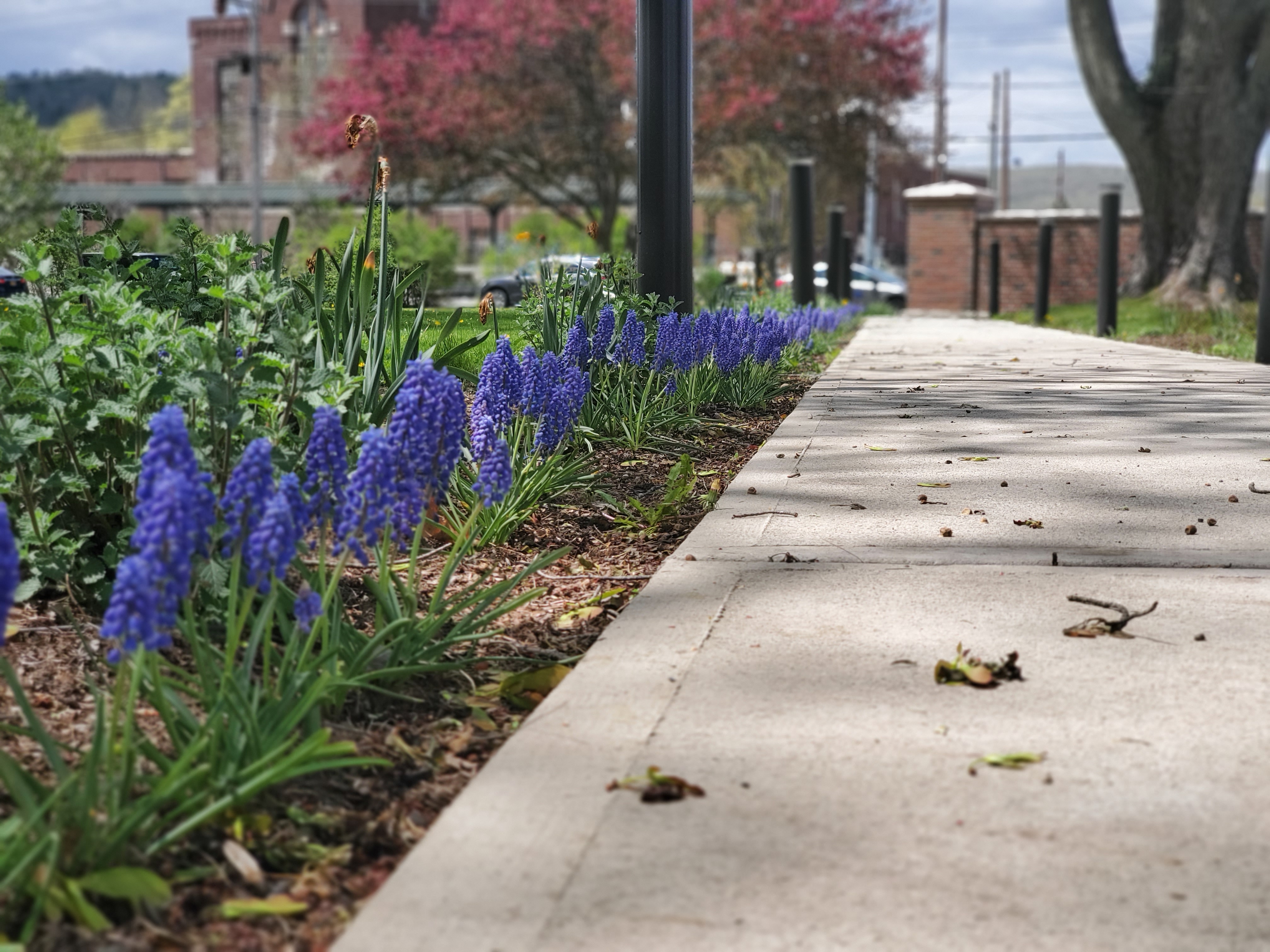The butterfly garden installed previously on the western side of Route 22 has been extended across the road to encompass a large section of what was previously just a turf field. The area of once mowed lawn now encompasses a bio-diverse, ecologically sustainable, resilient community of native plants. It harbors an everchanging mosaic of textures and colors with every season. As a result, the wildlife has followed.
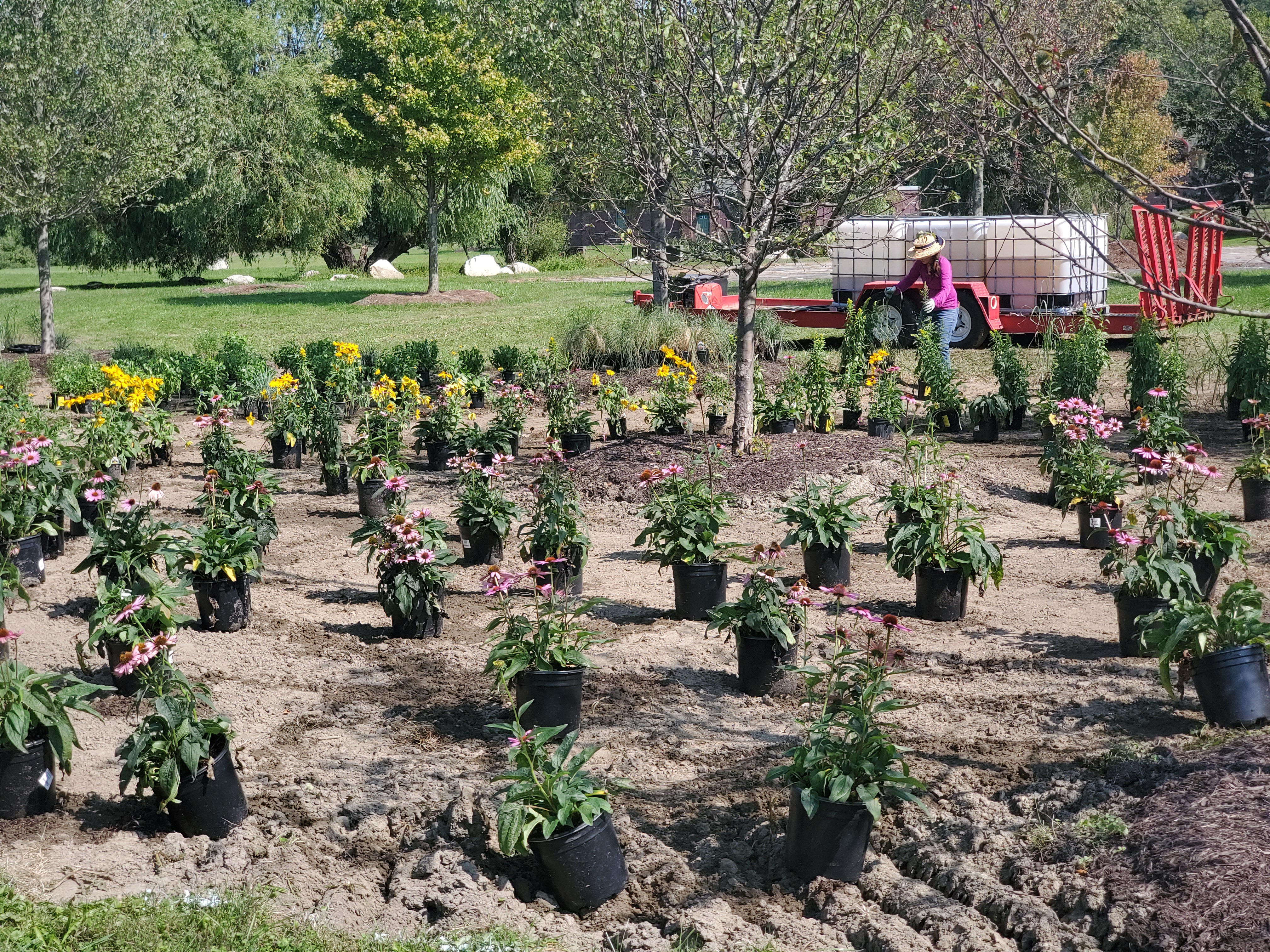
Birds and insect pollinators of every kind can be found feasting, nesting, and growing in this new oasis. Rabbits and other small mammals burrow and raise their young. The ecosystem is beginning to recover its annual cycles.
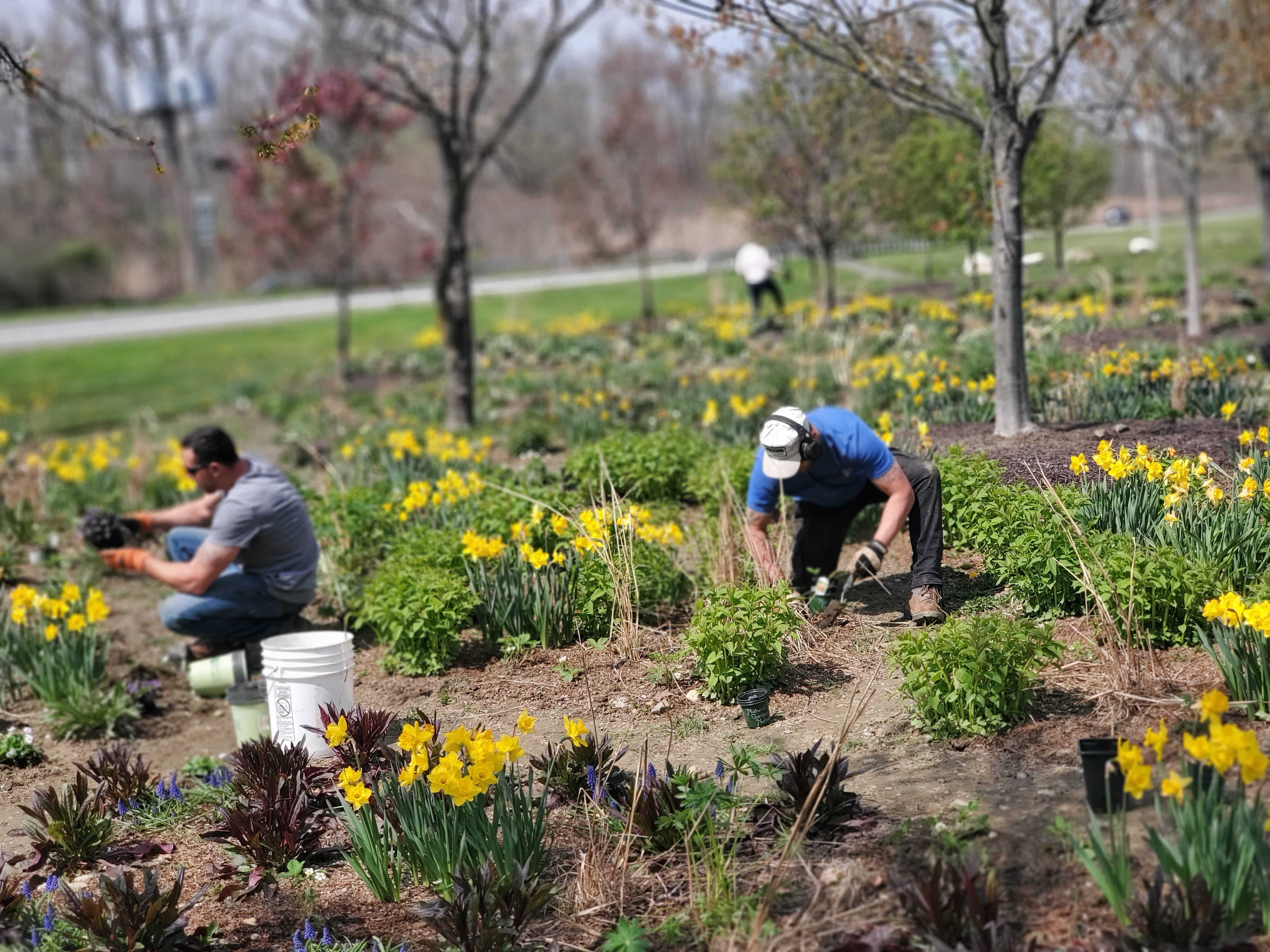
This new Northeast Quadrant has a row of flowering crabapples along with a row of red maple trees anchoring the site. Planted beneath these trees are many plants native to the area that would typically grow in an open meadow site. The area consists of three portions. The southernmost portion, close to the entrance gates, has soil that is somewhat drier than the other sections and has a slightly higher elevated portion.
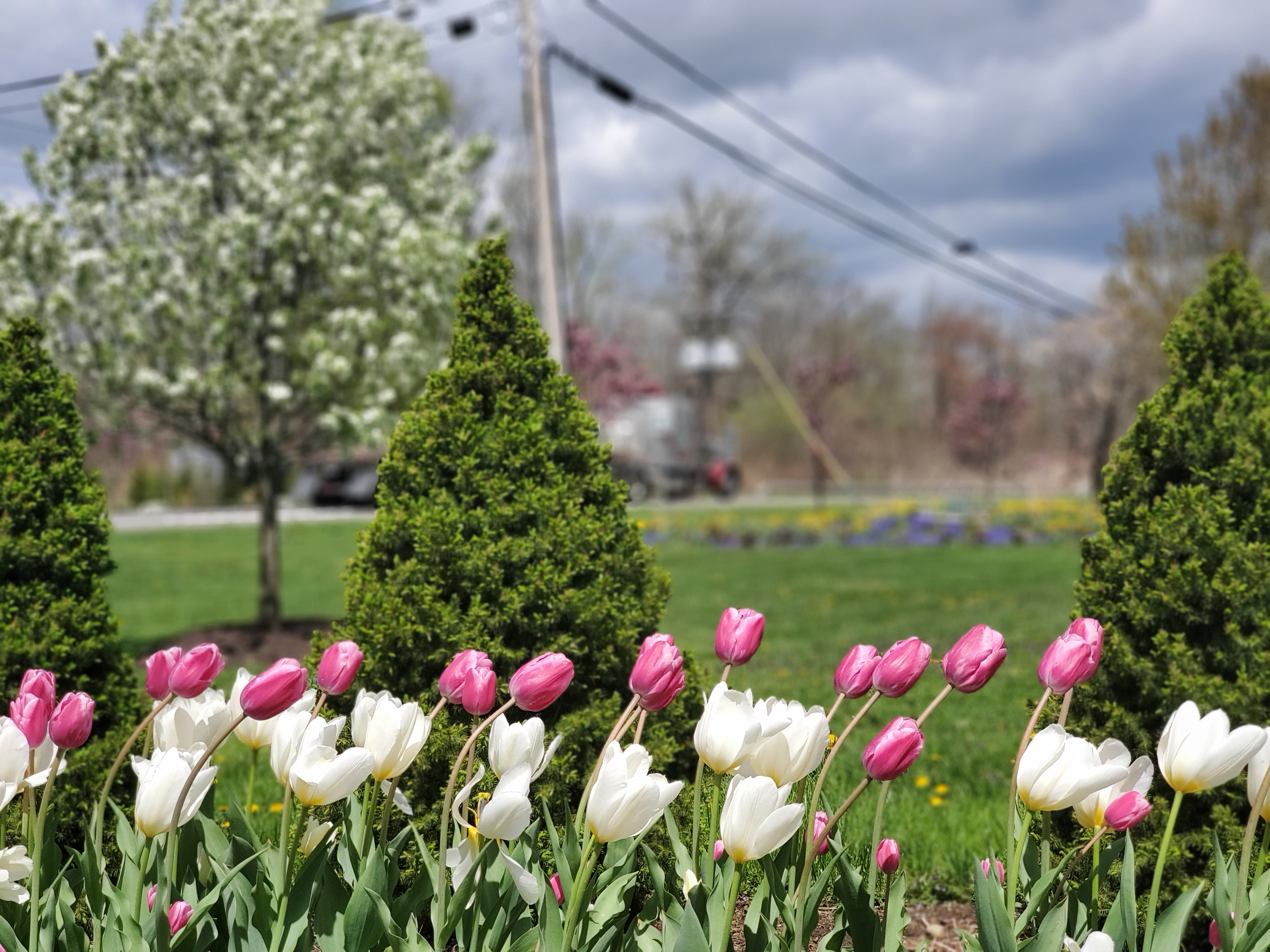
Some of the plants growing in this area were selected to draw your attention with color and medium height as well as take advantage of gentle breezes creating movement within the area. The amsonia, lupine, and penstemon are the dominate species here. The middle area has soil with slightly more moisture and the plants in this area reflect this preference.
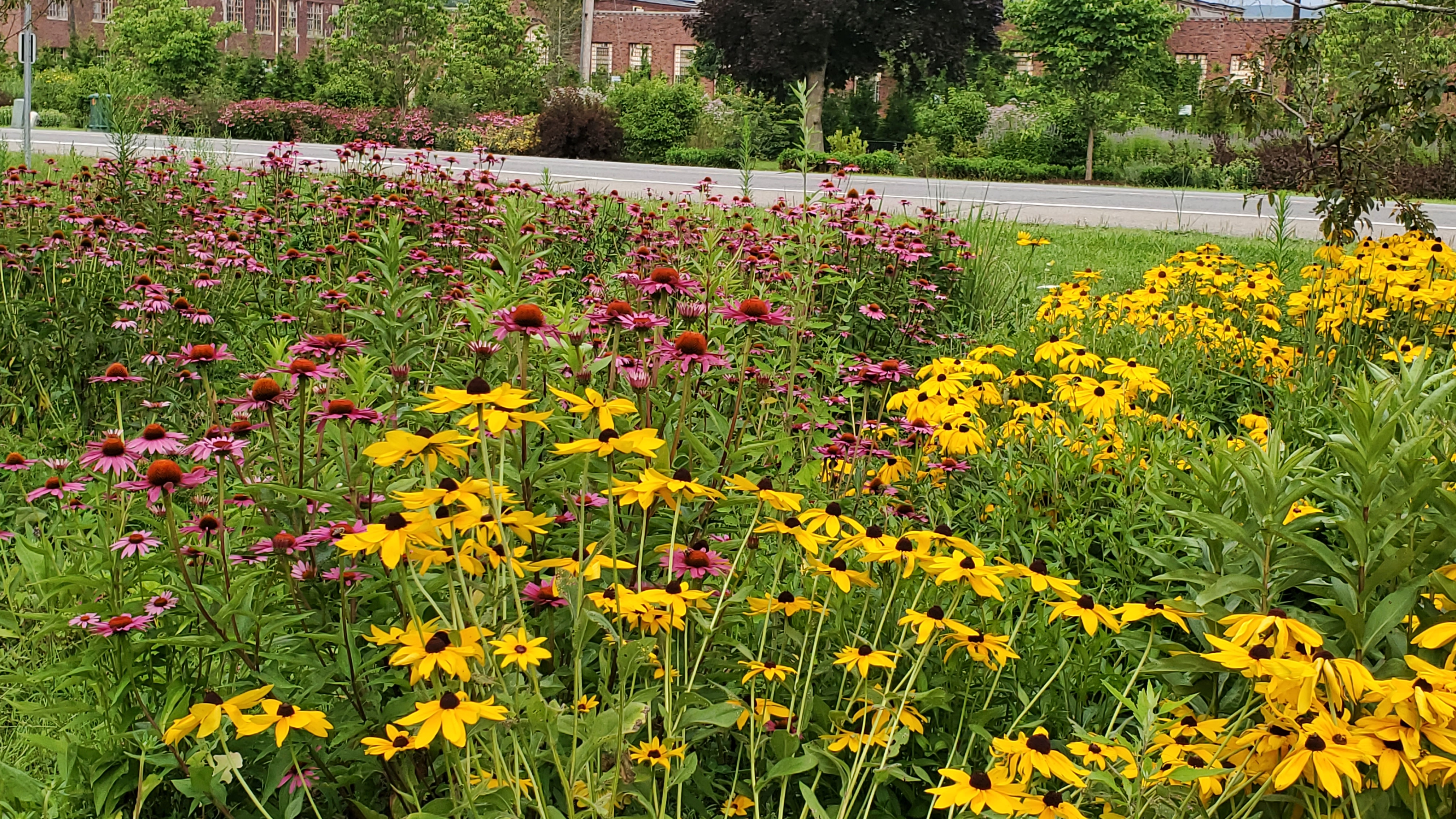
Asters, echinacea, mountain mint, and rudbeckia are responsible for the vast color display in this area. The northernmost portion has much wetter soils and some seasonal flooding in spring. The plant material in this section prefers these conditions.
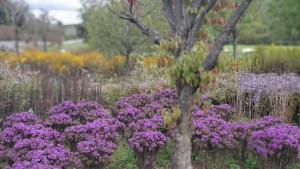
Many more sedges and late summer blooming plants are found here. Examples of this plant material include, joe-pye weed, NY ironweed, lobelia, and blazing star.
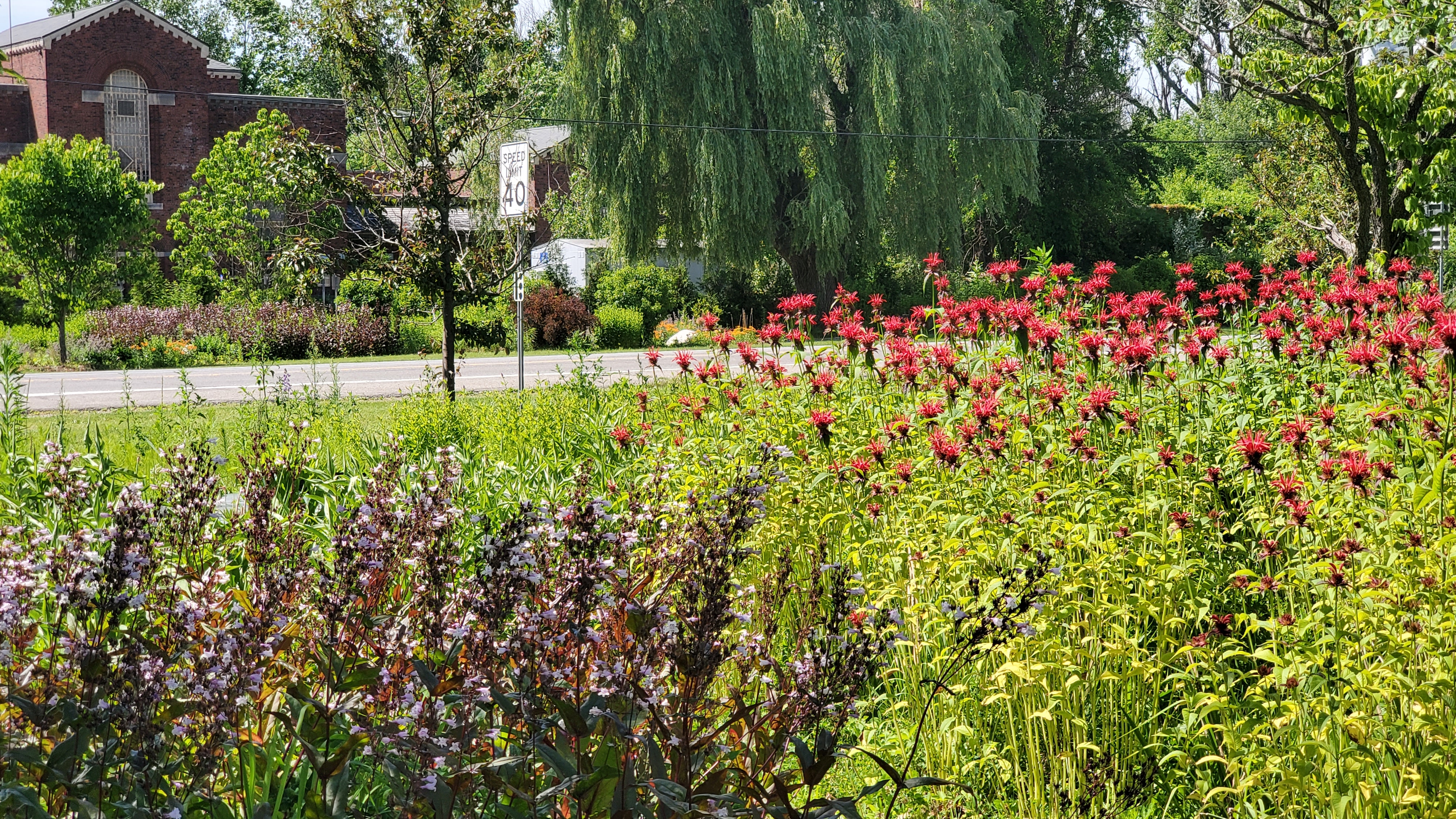
Each area has been designed with larger concentrations of the same plant species tapering to a smaller concentration. The design has a rhythm and flow of growing and ebbing plant material throughout the seasons. The entire area has meandering paths which have been maintained to encourage you to explore and experience the flowers and insects up close.
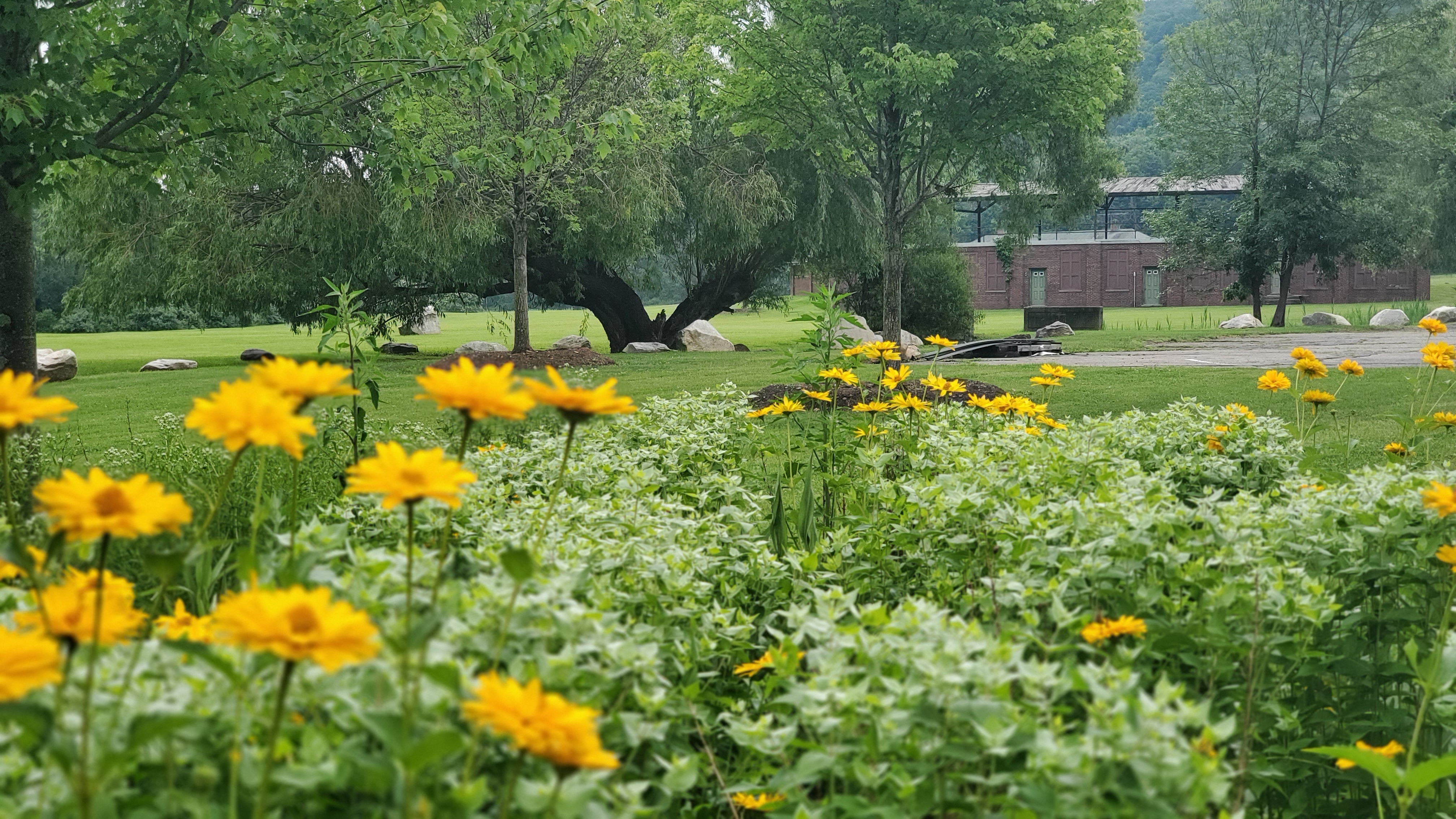
Tall native grasses such as big and little bluestem mark the entrances and exits of many of the paths. In addition to the large flowering plant material, each section has many layers of plants consisting of groundcovers designed to suppress unwanted weed growth and mid-story plants to provide support and early spring shade.
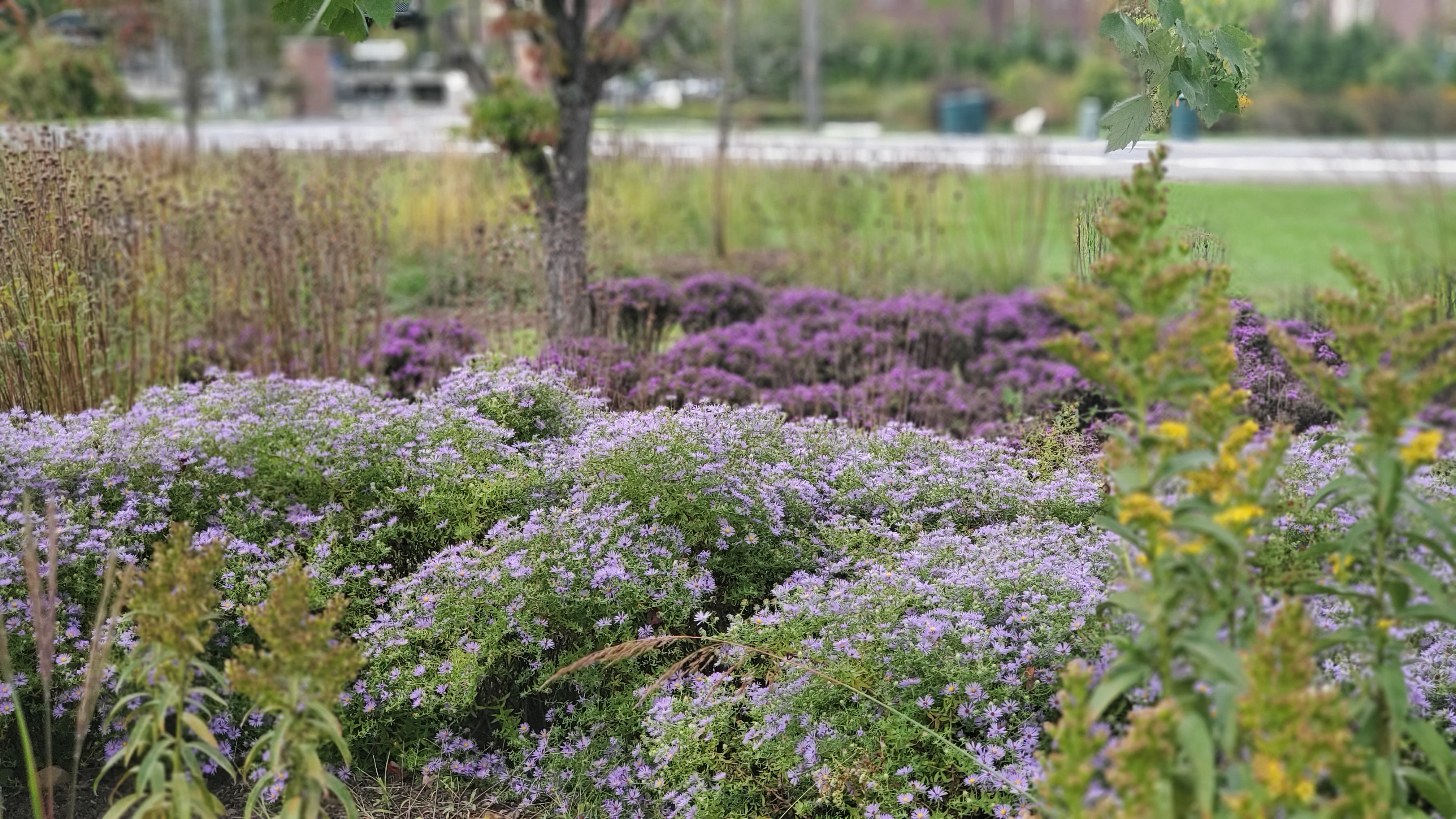
Ground covers include wild strawberry in the southern section, violets in the mid-section, and packera, with its delicate stalked yellow spring flowers and large leaves, in the moister northern section. Mid-story daffodils and camassia, bloom throughout the spring and provide a riot of color and early spring food for pollinators. Maintenance management of the entire area is consistent with sound ecological practices. Invasive weeds are managed by hand and the entire area is mowed in early spring to maintain the desired meadow ecosystem.
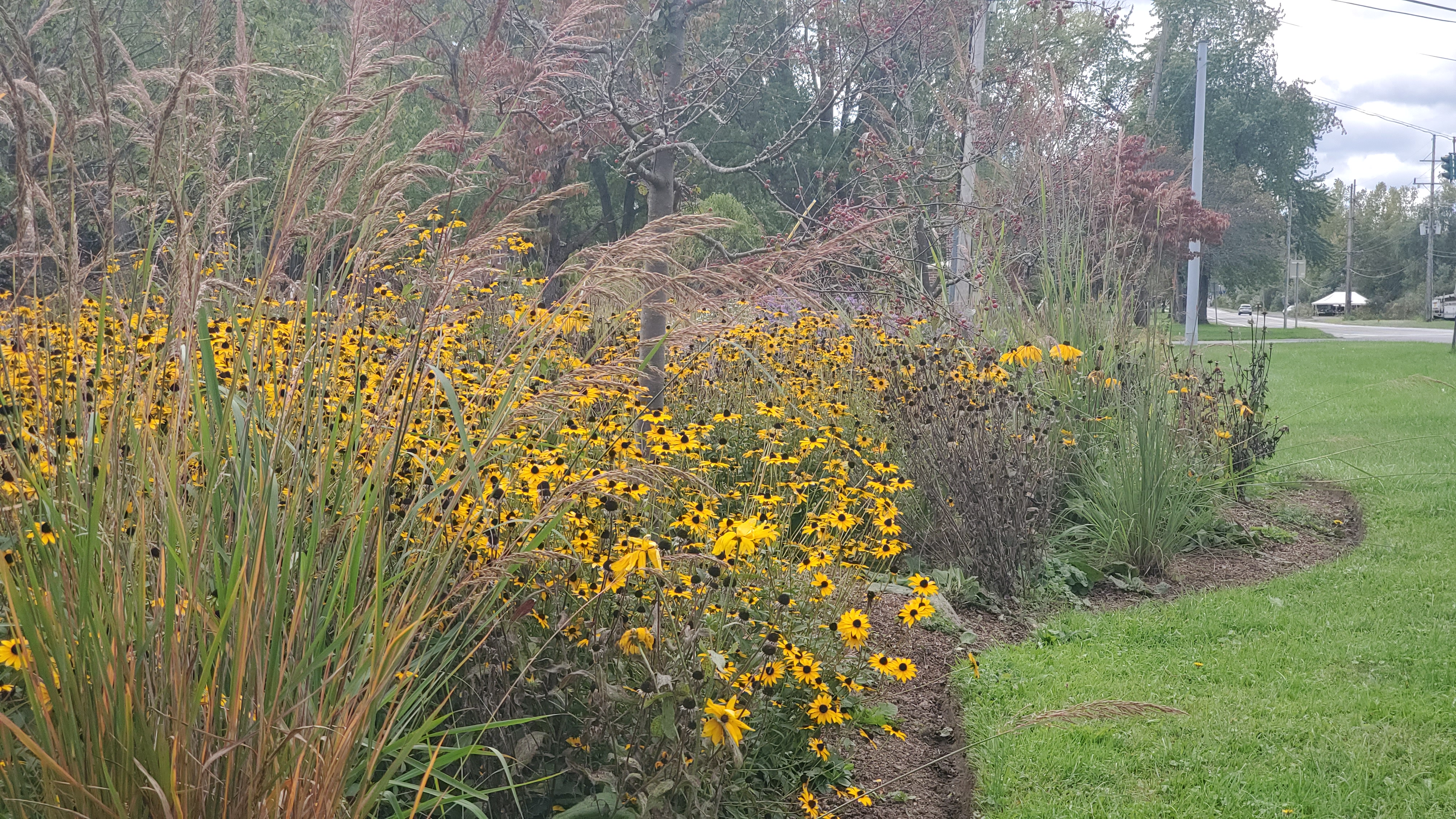
You are encouraged to explore the Northeast Quadrant meadow garden by accessing the paths from the entrance parking area and follow the mowed paths in and around the new meadow. Perhaps, you will be able to spot monarch butterflies and their caterpillars, cottontail rabbits, or many of our native bees pollinating the flowers. The area is accessible in all seasons. Have peace and enjoy!
